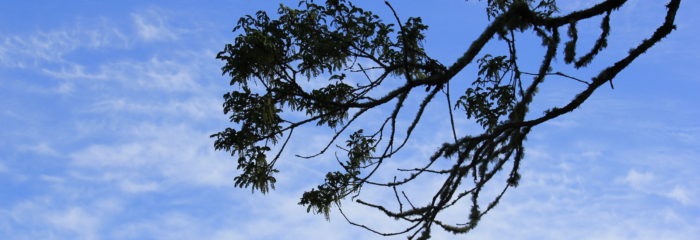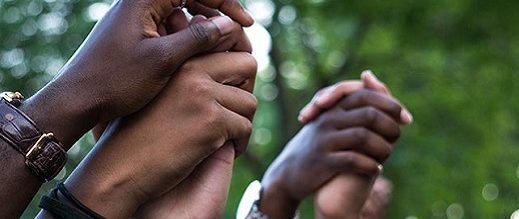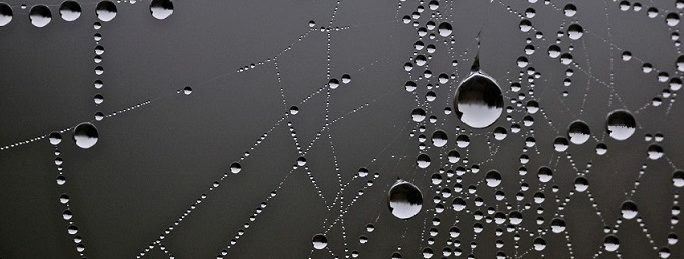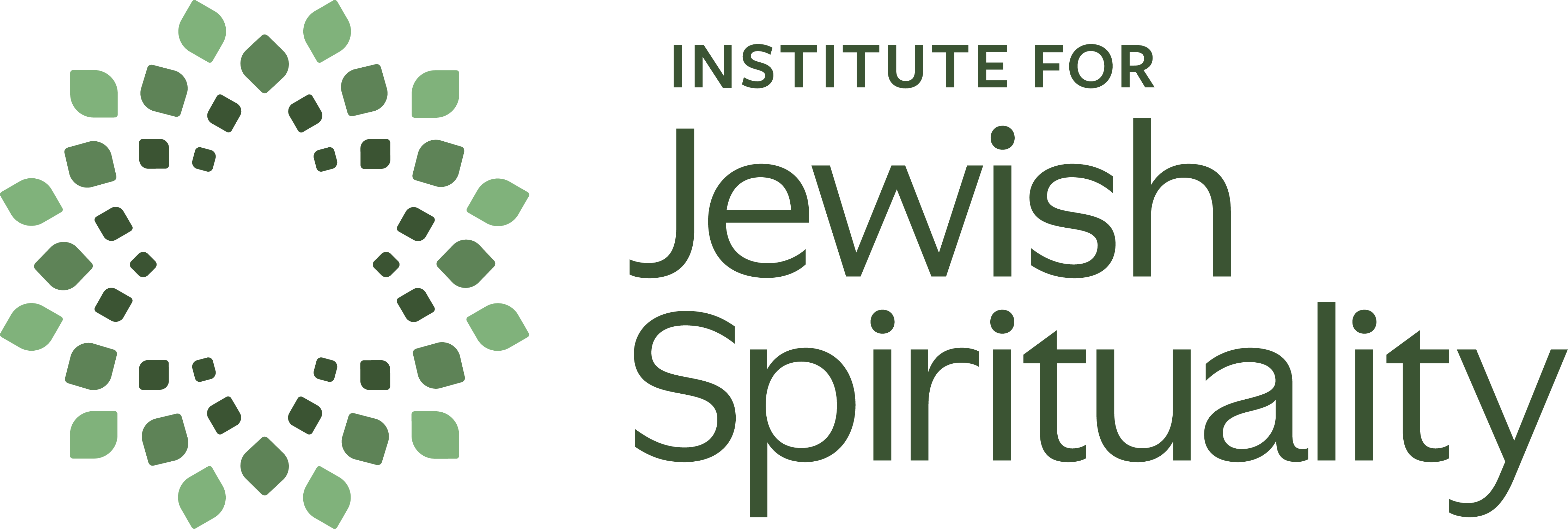Apr 24, 2017 | by Rabbi Lisa Goldstein, Former Executive Director, Institute for Jewish Spirituality

The truth is that telling the truth is not so easy. The sages of the midrash wryly told that when God decided to create human beings, the ministering angels broke into factions. Justice and Lovingkindness were in favor of this new creation, saying that people would do acts of tzedek and chesed. Peace objected that they would engage in war and Truth protested that humans would be filled with deceit. God’s response was to hurl Truth down to the earth, but the other angels rushed to its defense. “Is not Truth Your seal?” they said. And quoting Psalm 85, they added, “Let truth spring up from the earth!”
In this rabbinic take on human nature, Truth, of course, tells the truth that human beings have a hard time living truthfully. But I find the end of the midrash ambiguous. Did Truth return to the heavenly abode? Or did it remain among us to instruct and inspire us? What makes it so difficult to tell the truth?
I consider times I have knowingly lied and most of them arose from an attempt to save face. The greater damage to others, however, came from the times I lied almost unknowingly because I had not told the truth to myself. In those cases, the truth was too painful for me to face. I remember certain situations in which the truth sprang up in me as a clear voice, but I didn’t want to hear it and I looked away. I pretended I did not know and somehow I did not know. The lies I told then were the most harmful because I believed them myself.
How can we get better at telling the truth? One practice emerges from the mystical tradition, in which truth is the balancing point between the endless flow of loving kindness and the firm rigor of judgement. Truth is not the opposite of kindness; instead, it can be found by holding kindness and judgment at the same time. Sometimes an insight, an unpleasant judgment arises. If I am cultivating the habit of bringing loving kindness towards my experience, I have more space to notice: Oh, here is fear. Here is aversion. Here is the unbearable. And yes, here is truth, the truth I did not want to welcome, but which has come nevertheless.
What is true in our personal lives is also true on larger scales. In our national life, truth is under attack from many sides and yet, there are also some truths about our country that have come to the surface that have long been too uncomfortable for many of us to face. I hope that the practices in this newsletter can help us turn towards these truths with courage and compassion.
Apr 24, 2017 | by Rabbi Lisa Goldstein, Former Executive Director, Institute for Jewish Spirituality

Perhaps the author Paul Auster said it the most succinctly: “It occurred to me that the inner and the outer could not be separated except by doing great damage to the truth.”
One of the most radical intuitions that can emerge from contemplative spiritual practice is how profoundly everything is interconnected. There are so many ways we can talk about this experience. Jewish mystical texts discuss how waking up in the lower worlds causes waking up in the upper worlds. The sephirot map Divine qualities out there onto the human body right here. Nachman of Breslov piles metaphor upon metaphor (bechinot) in his teachings to show how seemingly unrelated things are surprisingly aspects of each other. Art Green and others help move vertical symbols into horizontal ones, encouraging us to connect the inside and the outside as one whole, all of which can be an abode for Divine light.
This is particularly important during times like ours. We are seeing clearly what we glimpse in our practice: namely, that the inner life is not actually separate from our outer lives. The conditions and conditioning of our hearts and minds shape our relationships and contribute to shaping our societies. And the opposite is also true. What happens on a national and international scale is not separate from us; we feel their influence in our relationships and in our souls. There is one thing happening on all the levels.
Wherever you are on the political spectrum, we might agree that these are remarkable times. We at the Institute would like to suggest that now more than ever is the time for the wisdom and insights born of spiritual practice.
Over the coming months, in each e-newsletter we will highlight a practice, a middah (way of being in the world), a teaching that we hope will serve as a resource in cultivating a grounded and resilient inner life that helps act us wisely and lovingly in ways that are most aligned with our core values. We will also offer a webinar to further explore the practice or teaching. All these resources will be available on our website.
Please contact me with feedback and suggestions. And may we learn to be more and more connected.
Nov 9, 2016 | by Rabbi Lisa Goldstein, Former Executive Director, Institute for Jewish Spirituality

There have been so many beautiful and helpful responses to the aftermath of the election. I would like to offer something a little different:
In my practice recently, I have become aware of certain universal human experiences that seem to function like fields of energy. The experiences can be love and trust, anger and fear. When these “fields” manifest in our lives, they take on a garb, the particular color and expression of our distinct, individual experience and context. But the underlying field of the experience is not our personal invention and is not unique to us.
Suffering is one of these fields. It is a universal experience that manifests in each of our lives in unique and concrete way. We can know it in personal and systemic garb, through illness or addiction, through poverty or discrimination and any other number of ways. Each garb has its set of strategies and reactions that come with it as we struggle to find the best way to address that particular kind of suffering.
But the thing about suffering is that it often tends to confuse us into thinking that our experience is separate from all others’ experiences. We focus on the garb, not the universality. As Tolstoy famously said, “Happy families are all alike; every unhappy family is unhappy in its own way.” Furthermore, we know from our practice that this very sense of isolation and separation is itself at the root of so much suffering. So it becomes a vicious cycle: suffering, separateness, alienation, more suffering and so it begins again.
Ironically, suffering is something that people on both sides of the political divide have in common, although the explanations and strategies concerning it vary widely. But if we can experiment with experiencing suffering as a universal field, we have a chance to open to mochin degadlut, a wider perspective. You might want to try this:
Take a seat of dignity and sense into your body.
Where is sensation arising?
What does the sensation help you notice about the climate of your heart/mind right now? Stay with whatever emotion arises in the body.
Now imagine that emotion as a huge, broad energy field that comes up from the ground and fills you, taking your shape as it does. What does it feel like?
Now imagine that this same energy field is also taking shape within others, those you agree with and those you don’t.
Return to the sensation in the body and see if you can soften a little around it. Breathe and soften. If you choose, try imagining the energy field again, in yourself and in others.
Perhaps it is possible to sense in our bones the potential of relief and the possibility of more connection, maybe even love. Perhaps that will help us discern with wisdom and generosity how we can best move forward now – for ourselves, our communities and our country.
With love,
Rabbi Lisa Goldstein
Sep 12, 2016 | by Rabbi Lisa Goldstein, Former Executive Director, Institute for Jewish Spirituality
 Scene one: I went to the local farmer’s market and bought some berries. I brought them home and when I opened the box to finish my lunch with fresh fruit, I noticed that the whole package was laced with mold. I was annoyed; the berries weren’t cheap! I grabbed my purse and the box and marched back up to the market in the hot afternoon sun. I got in line at the stand, only to be told by the woman in front of me that the line actually wound down the street and I had to go and stand over there. Just as it was my turn to move up, another woman, who also didn’t understand how the line worked, edged in to step before me. I curtly informed her that the end of the line was over there. She blinked, stood a moment, then put her items back and walked away, telling me that she hoped I didn’t hurt other people the way I had hurt her. Confused and contrite, I apologized, but she tossed a rude gesture over her shoulder and didn’t look back.
Scene one: I went to the local farmer’s market and bought some berries. I brought them home and when I opened the box to finish my lunch with fresh fruit, I noticed that the whole package was laced with mold. I was annoyed; the berries weren’t cheap! I grabbed my purse and the box and marched back up to the market in the hot afternoon sun. I got in line at the stand, only to be told by the woman in front of me that the line actually wound down the street and I had to go and stand over there. Just as it was my turn to move up, another woman, who also didn’t understand how the line worked, edged in to step before me. I curtly informed her that the end of the line was over there. She blinked, stood a moment, then put her items back and walked away, telling me that she hoped I didn’t hurt other people the way I had hurt her. Confused and contrite, I apologized, but she tossed a rude gesture over her shoulder and didn’t look back.
Yuck.
Scene two: It was a rainy morning, which somehow always means the subway is more crowded. I managed to squeeze my way in so I could get to work on time, only to end up on an express train that stopped between stations and sat for long minutes. A man in the car was demonstrating a new game on his phone to his friend. Apparently, he didn’t know you can turn off the sound and everyone was forced to listen to the endless insipid loop of music punctuated with little “whee’s!” and “ka-ching’s!” Did I mention it was loud? I breathed. I said to myself, “This is unpleasant.” I felt my annoyance rise in my chest. Then the man in front of me started dancing a goofy dance to the music and I had to laugh.
Ahh.
As we come into Elul, I am considering the interconnected nature of our actions. Sometimes I think that the way to actually know the underlying Oneness of everything is through certain kinds of mystical experience, but then I begin noticing how just paying attention to what we do brings the same insight home. My grumpiness is infectious. It rises up and pours out in my words, my tone, my body language. It makes another person’s bad day even worse. The same is true for joy, as well. The same is true for love. We are so profoundly interconnected as individuals. How much the more so are we interconnected as communities and nations and species on this small planet!
My intention for Elul is to become as awake as I can to the intended and unintended consequences of my actions. And who knows? Perhaps that will help prepare me for a more mystical experience of interconnectedness as the High Holy Day season begins next month.
Aug 5, 2016 | by Rabbi Lisa Goldstein, Former Executive Director, Institute for Jewish Spirituality

It’s getting to the point where I dread checking the news or signing onto Facebook. The spiking of violence in so many parts of the world, including on our own streets, the unbridled vitriol, the screaming without listening, the hot rage – perhaps I am getting old and myopic, but I don’t remember seeing this much venom before. I feel my heart close up, pressure in my throat. It is so profoundly unpleasant. I dislike the anger rising up in me and I want to turn away. But somehow I can’t.
I am also aware that we are currently in the three weeks of mourning leading up to Tisha B’Av, which will be observed on August 14th this year. Some years, I must confess, this day commemorating the destruction of the Temples in Jerusalem feels a little counter-intuitive to me. It’s summer! It’s a time of abundance! And what is this about the Temple? Perhaps I can grasp it as a symbol, but really, why focus on grief and mourning now?
Then I read an excerpt from Rabbi David Jaffe’s soon-to-be-published book, Changing the World from the Inside Out: A Jewish Path for Personal and Social Change. Rabbi Jaffe differentiates between “hot anger,” which is passionate and explosive, and “cold anger,” which is grounded in grief and loss. According to Jaffe, this cold anger can lead to creative solutions to intractable problems. And I thought, “Aha!”
The rituals of mourning that accompany Tisha B’Av can help me surface the grief and loss that is lurking under the despair and anger. There is so much to grieve: the lost lives, the disintegration of civil discourse, the loss inherent in not feeling safe, the fear that all of this evokes. When I sit with the grief that is under the other emotions, I can connect back to my heart. I can feel my own vulnerability and humanity. I might even feel the vulnerability and humanity of those I cannot stand because I sense their grief as well. After all, we are so profoundly interconnected.
Tisha B’Av moves us from mourning into Shabbat Nahamu, the first of a cycle of readings of comfort and consolation. As my meditation practice these days, I am focusing on a chant to the words “Ahavah verahamim, hesed veshalom” – love and mercy, kindness and peace. It helps me both allow the grief to surface and to cultivate the qualities I sense are missing in the world. It is a comfort for me and one which I hope brings strength and loving commitment to a better world.
Jun 21, 2016 | by Rabbi Lisa Goldstein, Former Executive Director, Institute for Jewish Spirituality

Last week I had the opportunity to be in Los Angeles for Father’s Day. I was delighted to celebrate with my family by going up to a picnic area by a small creek – complete with a waterfall – in the San Gabriel Mountains. When I was a child, we would often escape the heat and smog of Southern California by going to this lovely canyon with its white granite walls, the cold honey-colored water, the smell of oaks and sage. It was the definition of summer time.
Summer brings us out into the world in ways that we often don’t have during the rest of the year. Sometimes it is a pleasant experience – warmth, greenery, the long days. And sometimes it is less pleasant, too hot or too humid.
But in any case, it gives us the opportunity to experiment with a teaching from one of the texts we often teach in our cohorts. It comes from a very early Hassidic source, Likkutim Yekarim: “A high rung: Always consider in your heart that you are close to the blessed Creator, that God surrounds you from every side. … Be so attached that the main thing you see is the blessed Creator, rather than looking first at the world and only secondarily at God. God should be the main thing you see.”
A high rung indeed! And a beautiful thought experiment as we move outdoors this summer. What would it be like to experience the world through the lens of “This is God”? God: the creek. God: the oak and sage. God: the rattlesnake. God: the humidity. God: the crush of people in the city. God: the open expansiveness of vacation.
If you wish, I’d love to hear how the experiment goes. And in the meantime, I wish you a summer of delight!




 Scene one: I went to the local farmer’s market and bought some berries. I brought them home and when I opened the box to finish my lunch with fresh fruit, I noticed that the whole package was laced with mold. I was annoyed; the berries weren’t cheap! I grabbed my purse and the box and marched back up to the market in the hot afternoon sun. I got in line at the stand, only to be told by the woman in front of me that the line actually wound down the street and I had to go and stand over
Scene one: I went to the local farmer’s market and bought some berries. I brought them home and when I opened the box to finish my lunch with fresh fruit, I noticed that the whole package was laced with mold. I was annoyed; the berries weren’t cheap! I grabbed my purse and the box and marched back up to the market in the hot afternoon sun. I got in line at the stand, only to be told by the woman in front of me that the line actually wound down the street and I had to go and stand over 
